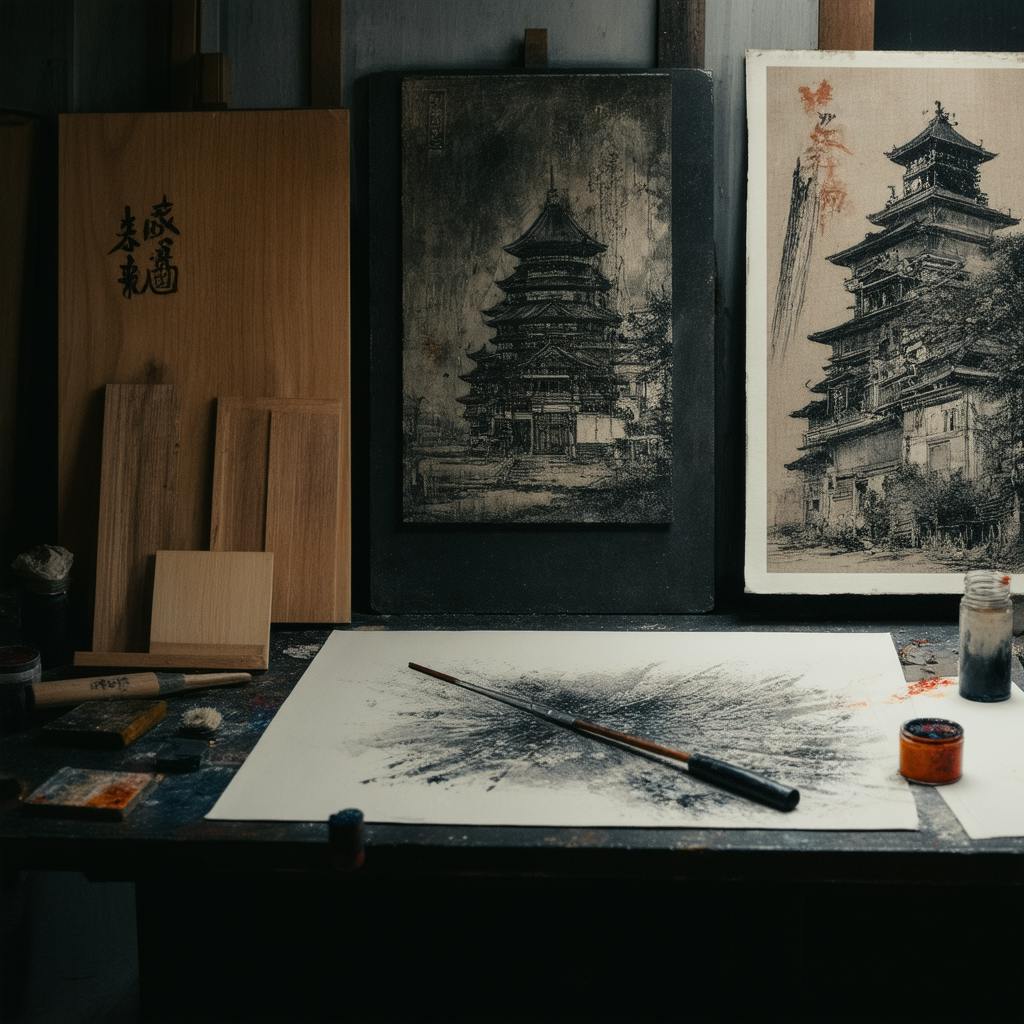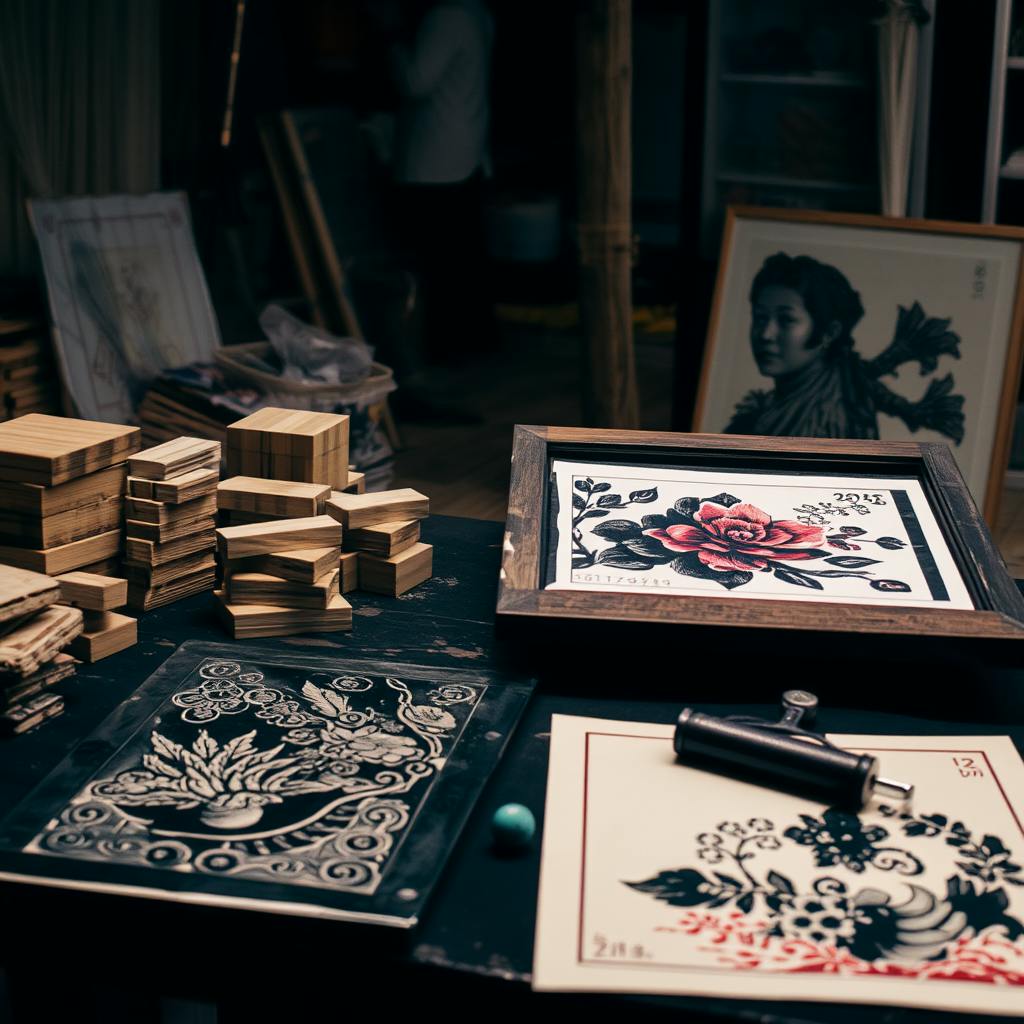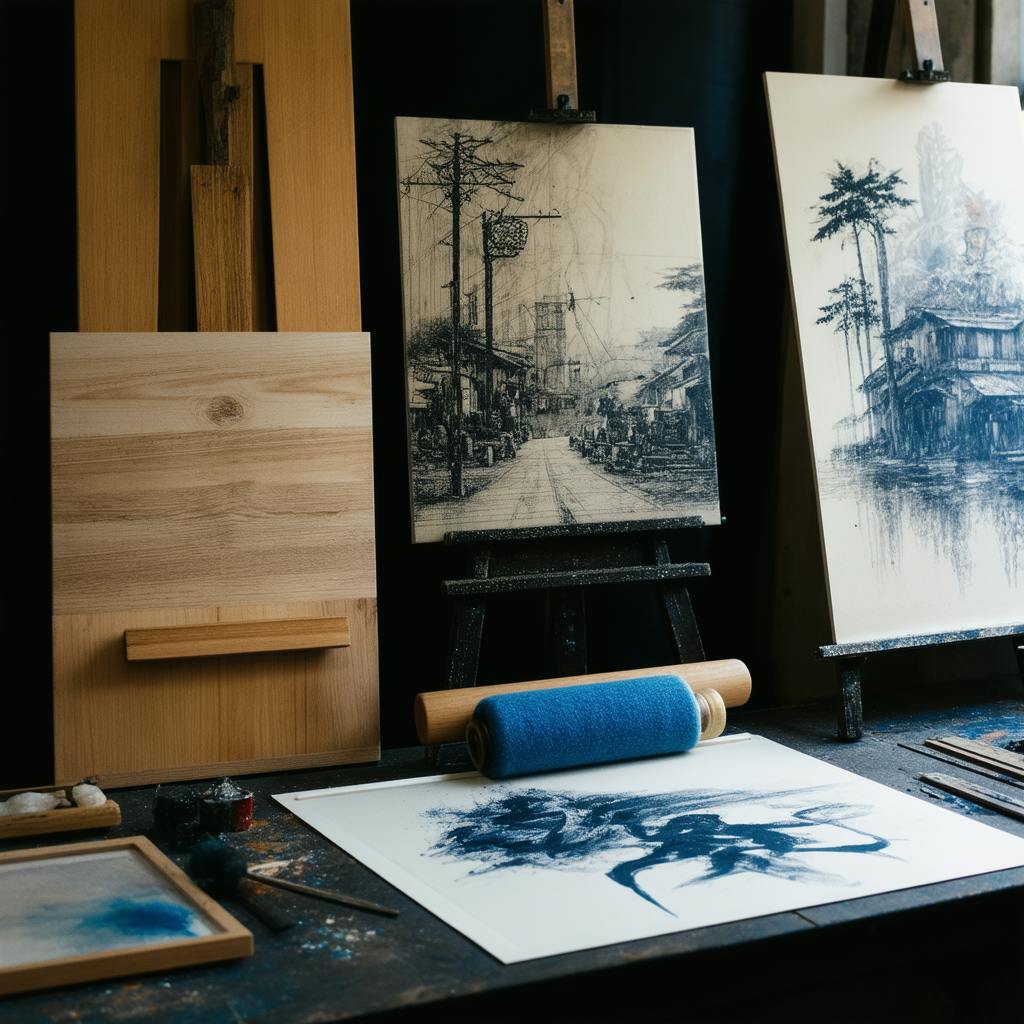Printmaking techniques have long been a captivating domain within the art world, bridging the gap between tradition and modernity. Defined as the process of creating artworks by printing, typically on paper, printmaking incorporates a variety of techniques that allow artists to produce multiple originals of their designs. This vast array of artistic methods encompasses a broad spectrum of styles and approaches, providing endless possibilities for expression in the realm of printmaking art.
Understanding Printmaking Techniques
Printmaking can be broadly defined as the process used to create images by transferring ink from a matrix onto another surface, often paper or fabric. This art form is notable not only for its ability to reproduce works but also for the unique aesthetic qualities each technique offers.
Traditional Printmaking Techniques
- Relief Printing: This technique involves carving into a material, typically wood or linoleum, so that the raised areas are inked and pressed onto paper. Types of printmaking within this category include woodcuts and linocuts, which are known for their bold line work and striking contrast.
- Intaglio: Contrary to relief processes, intaglio involves incising or etching into a plate, usually made of metal. The ink fills these recessed lines and is transferred to the paper under pressure. Techniques such as etching, engraving, and drypoint fall under this category. These methods are celebrated for their fine lines and rich textures.
- Lithography: This technique utilizes a flat surface, typically a stone or metal plate, treated to repel ink on non-image areas while attracting ink to image areas. Its ability to produce fine, continuous tones has made it a favorite for artists looking to create detailed and expressive works.
- Screen Printing (Serigraphy): This versatile printmaking method uses a stencil and a fine mesh screen to apply layers of ink on the desired surface. Known for its vibrant colors and bold graphic qualities, screen printing has been popularized by artists like Andy Warhol.
Modern and Experimental Approaches
- Digital Printmaking: Emerging with advances in technology, digital printmaking encompasses techniques using computer software and digital printing tools. This approach offers precision and the ability to experiment with an extensive color palette, bridging printmaking with digital art forms.
- Mixed Media and Collagraphy: Modern artists often merge traditional techniques with new materials and approaches, such as collagraphy, which involves building textures on a printing plate with various materials like fabrics, plastics, and adhesives. This allows for intricate, experimental designs.

AI made with YK
Printmaking Art Ideas and Innovation
The evolution of printmaking techniques continuously fuels creative expression, offering rich prospects for artists seeking dynamic ways to convey their ideas. With types of printmaking expanding from conventional mediums to contemporary forms, artists are empowered to push the boundaries of their art. From exploring abstract themes with woodcuts to blending photography with lithographs, printmaking provides a fertile ground for both novice and seasoned artists alike.
Addressing FAQs About Printmaking
What is the difference between printmaking and drawing?
While drawing typically involves creating a unique piece directly on a surface, printmaking is concerned with producing multiple originals through various transfer techniques, allowing for broader distribution and experimentation.
Can digital printing be considered fine art?
Yes, digital printmaking can be considered fine art when executed with an artistic intent, leveraging technology alongside traditional principles to create meaningful, original works.
FAQ on Printmaking Techniques: A Guide to 'Exploring Printmaking Techniques: From Traditional to Modern'
Welcome to our frequently asked questions (FAQ) section, where we delve into the fascinating world of printmaking as explored in the comprehensive guide, 'Exploring Printmaking Techniques: From Traditional to Modern.' This resource covers a broad spectrum of printmaking styles and methods. Below are answers to some common questions about the content and coverage of this guide.
How does 'Exploring Printmaking Techniques: From Traditional to Modern' cover modern printmaking methods?
The guide provides a balanced coverage of both traditional and modern printmaking methods. For modern techniques, it explores:
- Digital Printmaking: The advent of digital technology has significantly impacted printmaking. The book covers the integration of digital tools and software to create prints, bridging traditional methods with digital innovation.
- Photographic Processes: Modern printmaking often involves photographic techniques, such as photogravure and cyanotype, which utilize light-sensitive chemicals and digital images.
- Mixed Media and Experimental Methods: The guide also highlights the trend of combining different materials and methods, pushing the boundaries of traditional printmaking. Techniques like monoprinting and chine-collé are explored in this context.
Are there step-by-step tutorials provided for the printmaking techniques discussed in 'Exploring Printmaking Techniques: From Traditional to Modern'?
Yes, 'Exploring Printmaking Techniques: From Traditional to Modern' includes step-by-step tutorials for many techniques discussed. These tutorials offer detailed instructions and visual aids, making it easier for beginners and more seasoned artists to understand and replicate the processes. Each tutorial is designed to provide a hands-on understanding of both traditional and modern methods, encouraging practice and experimentation.

AI made with YK
What is the level of complexity of the printmaking techniques explored in 'Exploring Printmaking Techniques: From Traditional to Modern'?
The book offers a range of techniques that vary in complexity. It is structured to cater to all skill levels:
- Beginner-Friendly Techniques: Techniques like relief printing (e.g., linocut) and basic screen printing are accessible to beginners due to their straightforward processes and minimal necessary equipment.
- Intermediate Techniques: Methods such as etching and more sophisticated screen printing techniques are ideal for those with some experience in printmaking.
- Advanced Techniques: For advanced practitioners, the guide delves into complex intaglio processes, intricate lithography, and experimental mixed-media methods that require a deeper understanding of materials and a more refined skill set.
Overall, 'Exploring Printmaking Techniques:
From Traditional to Modern' is designed to be an invaluable resource for artists of all levels, providing inspiration and instruction to both novice and experienced printmakers.
Conclusion
Printmaking techniques, spanning from traditional to modern, offer a rich range of methods for artistic creation. Whether through the tactile process of relief printing or the precision of digital works, printmaking remains an influential force in contemporary art. By understanding these techniques, artists can tap into a vast reservoir of creativity, realizing unique visions while honoring a time-honored artistic legacy. As this art form continues to evolve, it remains a compelling avenue for artistic exploration and innovation.

